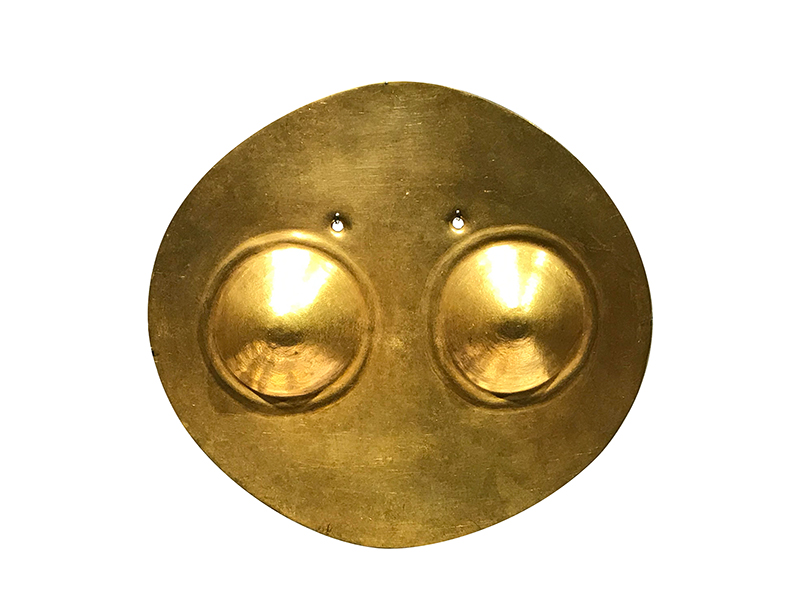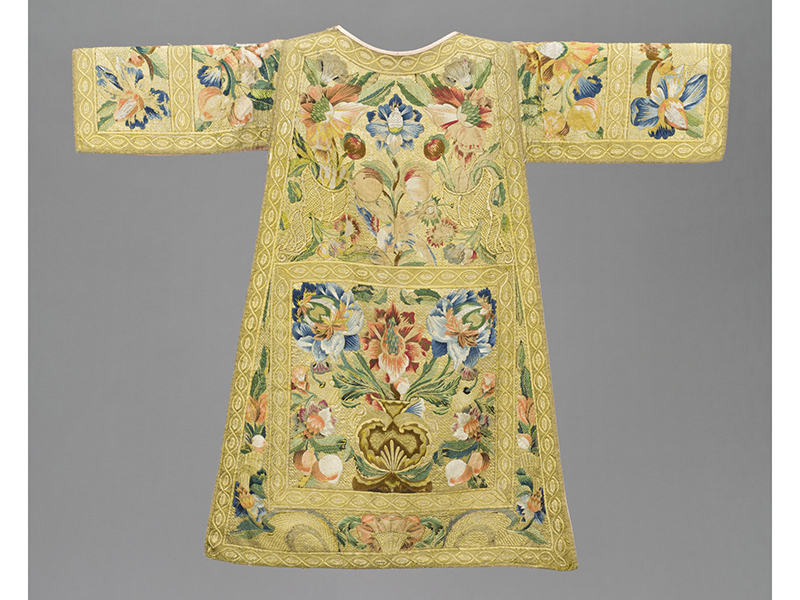
PAID PARTNER CONTENT
Special note: Because of COVID-19, the deadline for applying to MASieraad has been extended to March 8, 2021. Apply here.
What happens if three seasoned jewelry makers and one art historian join forces out of impatience with the current state of jewelry? Ruudt Peters, Ted Noten, Gijs Bakker, and Liesbeth den Besten have initiated an educational platform called MASieraad. The first year of every two-year master’s program has a theme. The forthcoming curriculum kicks off with Challenging Gold. It can be read as an invitation for critical minds from all fields: “We are looking for architects, designers, philosophers, bricklayers, and dentists to challenge gold!”

Common denominators
MASieraad grew from Peters’s observation that the field of jewelry could use some freshening up. “Somehow it is paralyzed,” says Noten. Education could be the spell to break that curse. With Bakker, Noten, and den Besten on board, preparations started. Numerous sessions followed to determine what would be needed to propel a new kind of master’s program. One of these get-togethers ended with the entire team plunging into a Dutch lake. Quite symbolic for the venture perhaps: no turning back. These strong-headed experts, who have often been opponents throughout their careers, sat down and formulated the common denominators for the degree program, which were published on their website as founding statements (see https://masieraad.com/Statements). This struck me as an admirable exercise, and not an easy one, which all later agreed was the case. A captivating detail: MASieraad left the Dutch word sieraad untranslated, as a nom de guerre and a reminder of the revolutions in jewelry that originated in the Netherlands.

How do they expect the upcoming generation to react to the wisdom offered? “With a clash!” Peters laughs immediately, “As in ancient Greek drama, they have to kill the father!” Bakker, himself one of the above-mentioned revolutionaries, pauses but agrees: “We can only share what we have learned over the years. At the same time, every generation has to stay suspicious of the assumptions they are being fed. I, for instance, loved it when the Italian Memphis group broke all the rules in design you can possibly think of.” Den Besten says “For me it is different because I am not a maker. When teaching at jewelry schools, I have noticed most students have no idea about history, and what jewelry can tell us about humankind, cultures, trade routes, cultural exchange, political alliances, war, or colonization. There is a gap. So, these empowering stories will be my ‘wisdom’ for the program.”

The monastery and the city
In 2018–2020 MASieraad began with a temporary master’s called Challenging Jewellery. After talks with several educational institutions, MASieraad has now landed at PXL-MAD, in Hasselt, Belgium. In combination with Amsterdam, it will be MASieraad’s home base starting next academic year. A quick internet search reveals that Hasselt promotes itself both as a historical university town and an incubator for start-ups. I see that it has some remarkable cultural institutions for its size, like the Fashion Museum and Z33. Says Noten: “That is right. And the department at PXL-MAD School of Arts is very well equipped so you can concentrate like a monk. Counterpart periods in Amsterdam will connect students to the vibe of that city and its jewelry network.”

Numerous nuances
The first master’s program was led by designer duo BLESS. This time, at MASieraad Hasselt-Amsterdam, the four initiators will be directly involved. Each will teach as a duo with a partner, who is preferably of another generation and with a different outlook on jewelry. Three of them have been announced. Art historian den Besten’s partner will be curator, writer, and lecturer Mònica Gaspar. Based in Switzerland, Gaspar investigates design and craft as critical practices. Peters will team up with Scottish artist and contemporary jeweler Paul Adie. The main force in Adie’s work is his personal relationship with the taboos and morals found both within the field of craft and our society. Bakker will go into depth about form, since he has noticed that often students lack knowledge about this most essential of design principles. He will teach in tandem with art and design theorist Louise Schouwenberg. Trained in psychology, sculpture and philosophy, Schouwenberg combines an understanding of the hands-on artistic process with a philosophical interest in art and design practices. Her main interest is the close relationship between people, things, and contexts, and how they co-shape each other. This setup, with diverse teachers who don’t always agree with each other, prevents MASieraad from delivering a class of clones after two years.
Even in the talks to prepare for this article, some diverging nuances presented themselves. For example, Bakker stated that “jewelry is an object on or near the body, to which the maker relates tactilely and emotionally”—an impressive definition if you ask me. But wait, “near” the body? Peters says: “At first when I start to make something, I don’t think about wearability. But it is an important issue. It is not always easy to bring a piece of jewelry out in public, it takes a solid person.” For den Besten, jewelry is communication: “Some say we invest a piece with a new meaning when it moves from the bench to the wearer. Another approach is that the objects and materials ‘have a life,’ regardless of us being nearby.” Noten does not care that much about what someone does with his work: “To never wear it and to take it with you in your coffin is as good an option.” What position to take? It dawns on me that the process of taking a position is a continuous effort.

Challenging
How about MASieraad’s call for … dentists and bricklayers? Peters clarifies it like this: “In the first editon of MASieraad, we did not only have jewelers but also students with a background in fashion, economics, acting, and curating. Insights from other realms proved of an incredible value, both ways. The door is open for more crossovers.” For Bakker, this has to do with a set of jewelry qualities that can serve as an approach to any discipline, considering things like detail, the human body, intimacy, ritual, and tactility. So, I ask, when is MASieraad Hasselt-Amsterdam a success? “When students gain new insights.” “When MASieraad becomes an institute, a movement.” “When they create alternatives for the current gallery system.” “When something originates—not necessarily jewelry—that contemplates the human scale.” “… and for sure they need to have a lot of fun.”
Again, a myriad of answers. But on this one thing the initiators of MASieraad wholeheartedly agree: they hope that students will question what jewelry stands for and explore what is the new gold. Says Noten: “It could be the bitcoin for that matter! Open up and wonder!”

Learn more
Information on MASieraad Hasselt-Amsterdam
Instagram: @masieraad
Email: info@masieraad.com
Apply here.
MASieraad consists of Ruudt Peters, Gijs Bakker, Ted Noten, Liesbeth den Besten, Liesbeth in ’t Hout and Leo Versteijlen
Statements and IGTV videos

This article was originally published on Klimt02 on December 11, 2020. Reprinted with permission.




